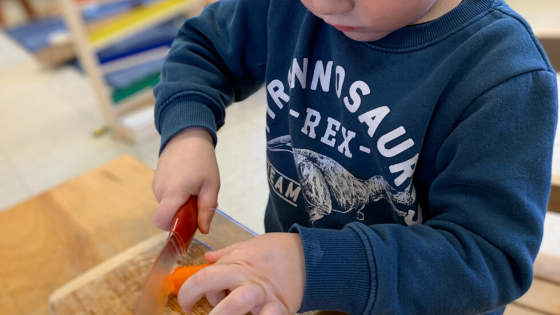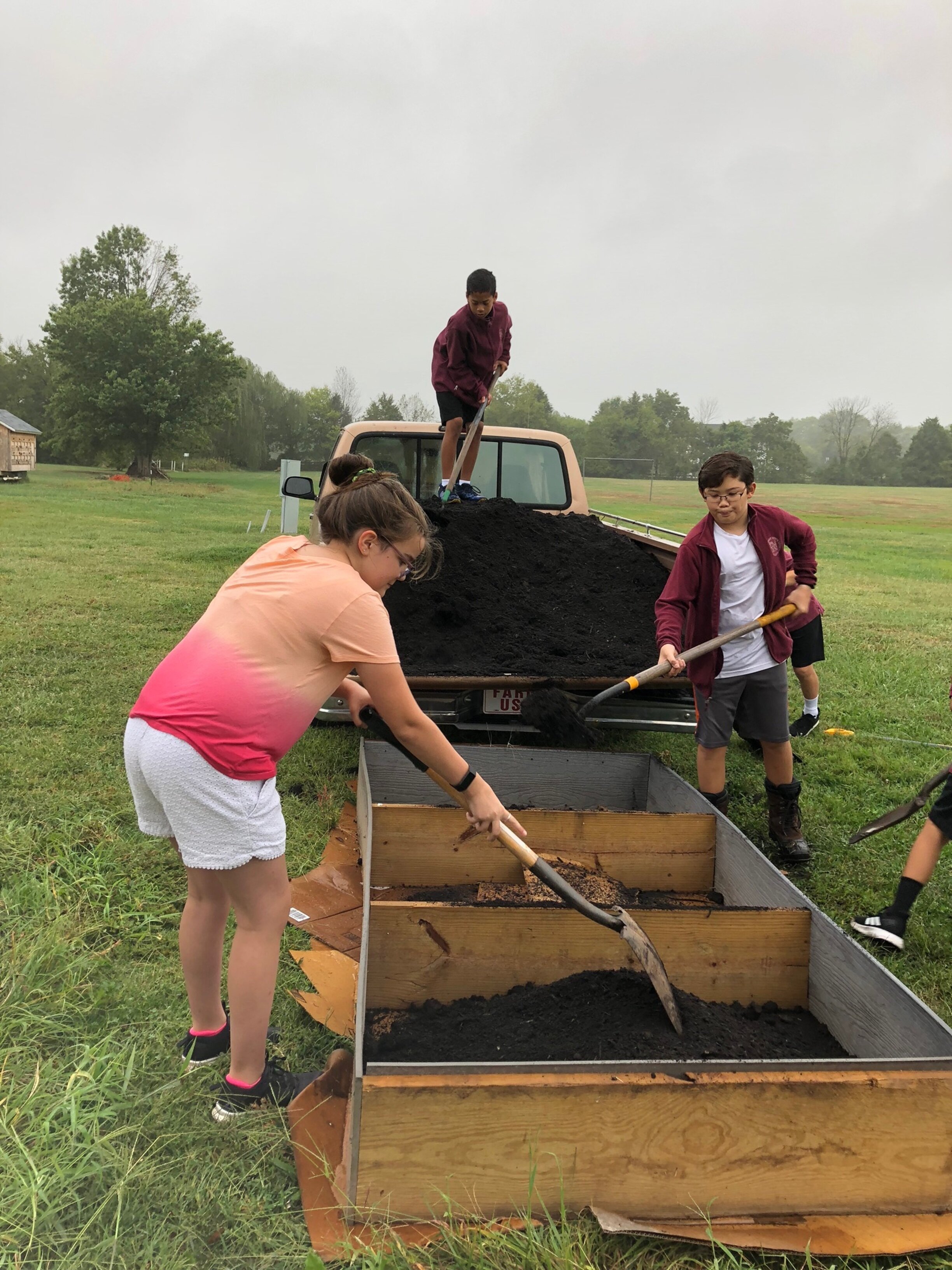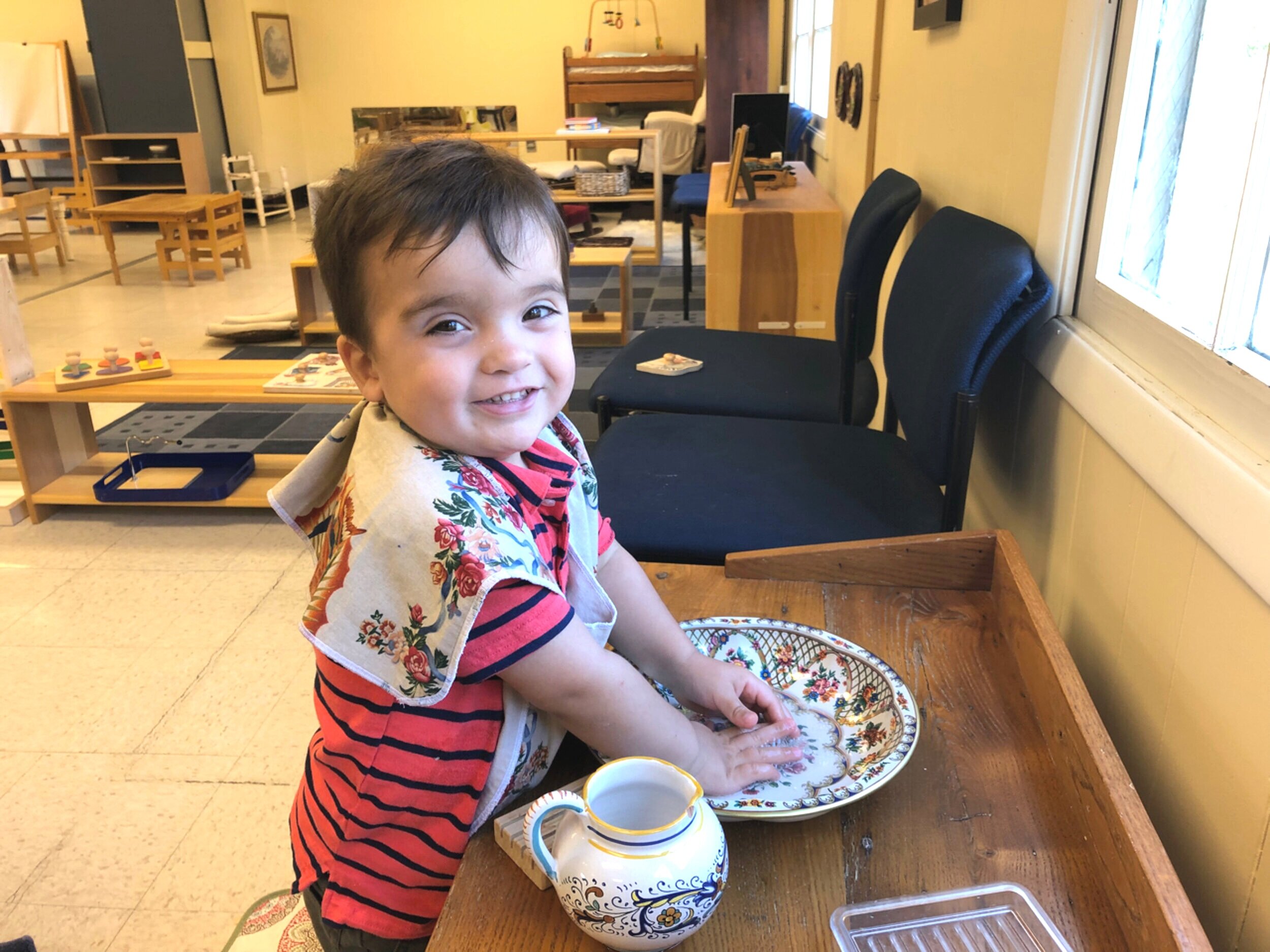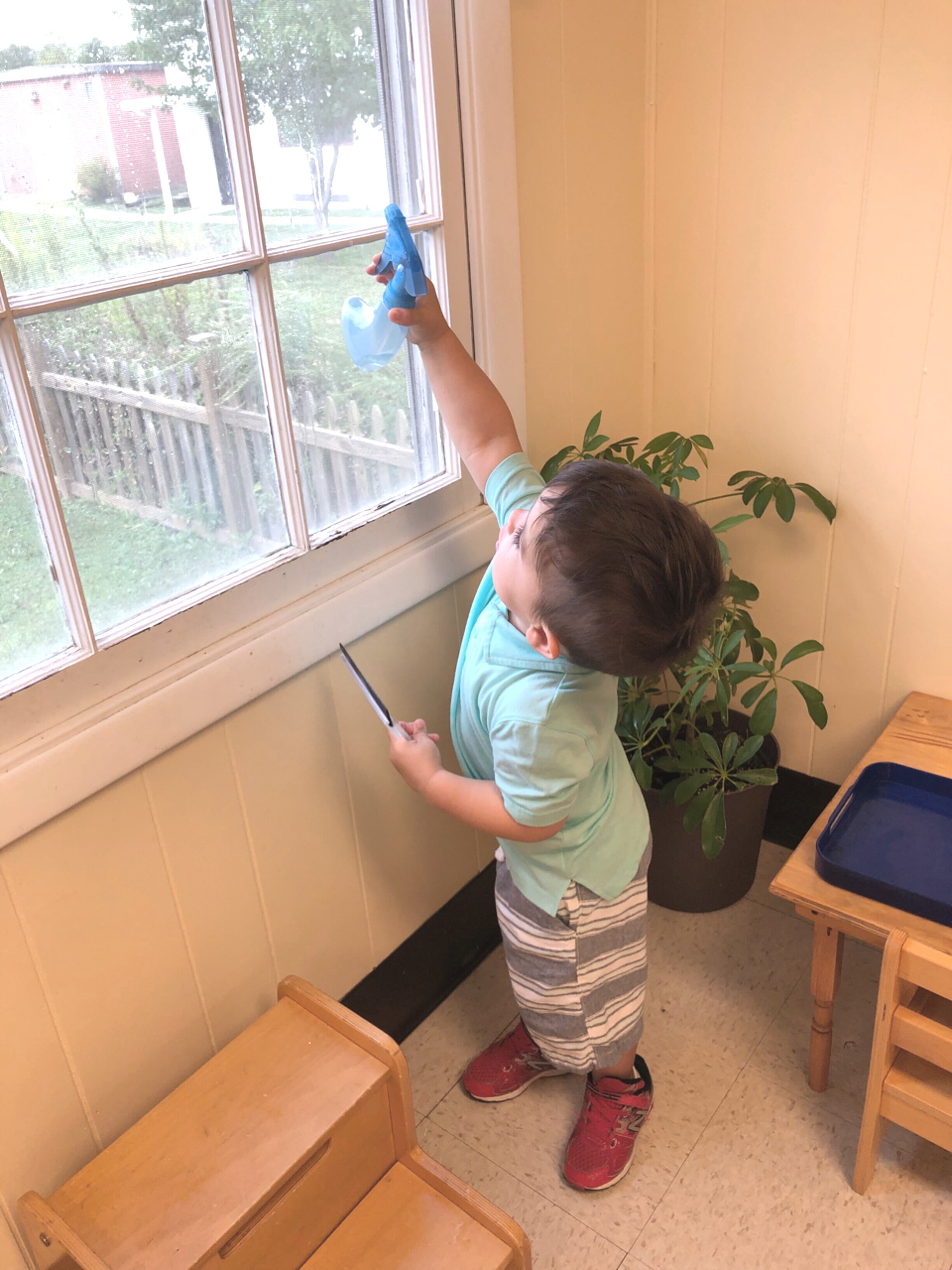Chores: the word has such a negative connotation. But does it need to be that way?
Do you remember doing chores when you were growing up? For some of us, we remember them as a negative consequence. For others, we never had them and it took us a while to learn how to do them as adults. Still others remember helping out around the house but not thinking it was a big deal. It’s all in how we, as parents, frame it for children. How we present the concepts of chores makes all the difference. Having kids pitch in isn’t just helpful for us (because, let’s face it, it’s often more work for us on the front end), it’s really good for them, too!
What are the benefits?
There are so many important reasons to incorporate regular chores into your children’s routines at home. Here are just a few:
Developing independence
As Montessorians, we see great value in teaching kids to do things for themselves. It feels incredibly empowering to master a task and be able to complete it by oneself. Young children are at the perfect age to begin this work, as they are constantly looking for ways to do things independently.
Fostering a sense of belonging
By giving children ways to contribute to maintaining the home environment, you are effectively letting them know they are a valued, important member of the family. Besides, working side by side to tidy up is bonus time spent together, and couldn’t we all use a little more of that?
Learning practical life skills
We all need to learn how to do our laundry, wash our dishes, and pick up after ourselves. Just like children need guidance when learning how to read or add, they need the same with basic life skills. When we get down to their level and show them how to do the job, we are setting them up for a future of success as adults.
Options for all ages!
Well, we can let the infants take a pass here. Even young toddlers, however, are perfectly capable of learning some basic chores. The following is a collection of suggestions. It would likely be far too much to implement all at once, or even for one child to be wholly responsible for an entire list. Think of it as potential inspiration, or guidelines to help you determine what your child is developmentally capable of.
Toddlers (yes, toddlers!)
Even little ones have a lot to offer around the house. Start small and offer child-sized tools.
On the floor beside where your child eats, use painter’s tape to create a small square. Using a small dustpan and brush, show your child how to sweep the crumbs into the square, then into the dustpan. It can be fun to keep the dustpan available on a nearby hook, beside a small container of colorful pom poms or the like. Your toddler will love practicing!
Teach your child how to fold napkins. Keep a small basket with napkins in it available for them to practice.
Let them help set the table. Watch their tiny face light up at being given such an important task. Resist the urge to straighten things out when they’re done!
Teach them to put their own toys away and be consistent about having them clean up as soon as they are finished playing. They may need some help, but they are capable of putting toys back into a bin or on a shelf.
Preschoolers
This is a great age for children to learn chores. They are able to do more than we often think they can, and they are so excited to help!
Clear the table. They will probably need to make multiple trips to avoid breaking dishes, but they will delight in collecting plates and cutlery to bring to the kitchen.
Teach them to wash the table. First, show them how to carefully brush crumbs off into their hands (you can also buy a special crumb set here if it’s easier: https://www.forsmallhands.com/small-crumb-set ). Next, show them how to wash the table with whatever method you prefer. It can help to have a small bucket of soapy water with a sponge and dry cloth. They will need lots of modeling (remember to emphasize wringing out that sponge!).
All that sweeping practice they had when they are toddlers? It can continue now, and they can also learn to mop. Remember that child sized tools make it easier for them to get the job done.
Kids this age can feed pets, although they may need you nearby.
Give preschoolers the task of choosing and laying out their own clothing. In the beginning they will need guidance as to what is weather-appropriate. Be prepared for some outfits you will perceive as wacky but take that moment to appreciate their blossoming independence and sense of personal style.
Show them how to care for plants. Chances are, they’re already doing this in their classrooms at school to some extent. Teach them how to water and talk about how we know when plants need water.
Young children
As the child gets older they are capable of so much more. Children ages 5 through about 8 are very competent, though they may be a bit less enthusiastic than they once were. Building chores into the family routine will make this easier for everyone.
Children at this age can fold and put away laundry. Start small: a full load of laundry to put away by themselves the first time will only set them up for frustration. Sit together and teach them how to fold various items. Sort through clothes and let them choose a category the first few times. For example, they may fold all the shirts while you work on the rest. Slowly increase their responsibilities as they gain the skills necessary to complete the task.
Kids who are eating lunch at school can help pack it themselves. Teach them how to make a sandwich, chop vegetables, and even how to select a balanced variety of foods. Remember that choice and independence are very empowering.
Let them empty the dishwasher. If they can’t reach a particular shelf, keep a step stool nearby.
Chores that are tedious for adults, like dusting or washing the baseboards, are great fun for kids. If it gives them the sense that you trust them with an ‘adult’ task, they will likely be thrilled to give new tasks a try.
Depending on their size, let them vacuum rugs.
Older children
Again, as certain children get older you may be met with initial resistance whenever introducing a new chore. Try to keep it light and fun, and present it as a positive: as we get older we may have more responsibilities, but we gain new freedom and privileges.
Weeding the garden is a great task for older children, but they’ll likely enjoy it more if you’re weeding alongside them.
They are now old enough to do the laundry. Start small and set the expectation that they do their own laundry. They will need reminders, but having a system (a basket of their own and perhaps a sticky note with how-to reminders) will help get the job done.
Again, depending upon the child’s size, they are likely able to take out the trash and recyclables.
You may consider increasing their responsibilities in regards to pet care. They may be able to walk the dog, clean dirty cages, and do some basic grooming.
If they haven’t already learned, now is a great time to teach them how to make their own bed. This includes learning how to change the sheets.
If your child has been attending a Montessori school, they’ve been learning how to prepare their own food since they were 3 years old. Take advantage of that knowledge base and let them make lunch for the family once in a while. They may even want to try more cooking or baking on their own (but with supervision).
Teenagers
Teenagers are able to do most, if not all, of the chores we do as adults. Remember, we are not suggesting they do all of these chores all the time, but reinforcing the idea that they are capable of any of them will help set them up for success. Sitting down together and agreeing on a schedule or rotation might be a good starting point. Here are just a few ideas:
Let them mow the lawn or rake the leaves.
Have them wash the dishes.
Give them a chance to watch younger siblings while you run errands or go to an appointment.
Teenagers can do some more thorough cleaning, like wiping down counters or washing the bathroom.
Let them cook dinner. Instead of viewing this as a chore, they may enjoy the opportunity to choose the recipe and help shop for the ingredients themselves.
When giving a child of any age chores to do, the key is to find balance. Chores are so important for their development, but so are things like play, reading, time together as a family, and time with friends. Be aware that children can often do more than we think they can, but also be aware of the big picture that is their life.
Looking for more ways to cultivate independence? Montessori may be the answer. Call us today to learn more.











